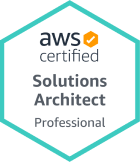Make the most out of R Shiny.
Discover examples, best practices, and expert insights through our free R Shiny guidebook.
Get started and connect your data with decisions.
Troubleshoot common R Shiny challenges.
Get on top of your goals with automated reporting.
Master advanced R Shiny features.

Some of the
amazing
organisations
we work with.
















Don’t let common R Shiny challenges
hold you back!
Investing hours into a project only to get stuck at some point can be disheartening.
If you are looking for powerful ways to work with your data and build bespoke dashboards that equal the quality of your analytics, improving your R Shiny skills has never been easier.
We have distilled our experience into a guide to help you on your journey.
Don’t let a lack of guidance hinder your progress. Grab our free guide to what R Shiny can do for you and how you can propel your data story to success.
See what's in the Guide
Dashboard design mastery
Unlock the secrets to planning and crafting visually engaging, user-centric R Shiny dashboards.
Efficient hosting solutions
Master different types of R Shiny deployment including deployment on AWS, Azure, and Docker.
Performance optimisation
Techniques to boost the performance and speed of your R Shiny apps.
Advanced R Shiny features
Delve into high-end functionalities that will set your R Shiny project apart.
Open-source widgets
Access Epi-interactive's free GitHub widgets to enhance your R Shiny apps' functionality.
Inspiring examples
Explore diverse, impactful R Shiny applications across various sectors.
About Epi-interactive
Our interdisciplinary team stands at the forefront of R Shiny app development and supports many organisations to make their data and research more accessible, and link complex analytics with practical decisions. Built upon our passion to improve human, animal and environmental health, we have helped transform complex data into actionable insights for governments, private enterprises, universities, and global organisations.
We don’t just build apps; we craft interactive insights that empower decisions and scale analytics into high performing decision-support tools – fully customised to our client’s needs. If you’re aiming for R Shiny mastery, let our experience be your guide.
As Posit Full Service Certified Partner we further offer implementation, support and maintenance services for Posit products.





R Shiny FAQs
Dive into common R Shiny queries below.
Yes, R Shiny can handle substantial user loads, data sets and processing when correctly configured and deployed, making it suitable for enterprise applications. It is suitable both for internal and public facing enterprise applications. It can be set up to cater for user authentication and permission management and to support enterprise-level security standards.
There are different options depending on your requirements. Most people start with Shinyapps.io, the cloud publishing platform provided by Posit. More advanced features are available with Posit Connect, Shiny Server or ShinyProxy, which can also address data sovereignty requirements, e.g. when data needs to reside within a country. The guide also covers best practices such as using renv and Docker for environment consistency, cloud platforms like AWS and Azure for scalability, and options for regular app monitoring.
Yes, thanks to the vibrant community supporting R Shiny! Posit, the company that invented R Shiny, has a ton of resources available on shiny.posit.co to get started, there is also “Mastering Shiny” by Hadley Wickham and “Engineering Production-Grade Shiny Apps” freely available online for the more advanced user. Epi-interactive’s GitHub repository offers a range of open-source widgets and tools specifically made available for enhancing R Shiny apps.
Through interactive elements, customised visualisations, R packages for common visualisations such as Plotly or Leaflet, and integration with tools like Quarto and Markdown, R Shiny enables dynamic and impactful data narratives.
Yes, R Shiny is accessible to beginners with some R knowledge, with resources available for learning basic to advanced concepts in interactive web application development.
The guide emphasises understanding user needs, selecting appropriate visualisations, maintaining visual consistency, and optimising for mobile responsiveness.
Yes, R Shiny can be extended with HTML, CSS, and JavaScript to create custom user interfaces and interactive features.
The guide suggests server-side data processing, using efficient data formats, and reactive programming techniques to handle large datasets effectively.
Master R Shiny with our Ultimate Guide.
Unleash R Shiny’s full potential to make sure your dashboards and tools keep up with your data.
